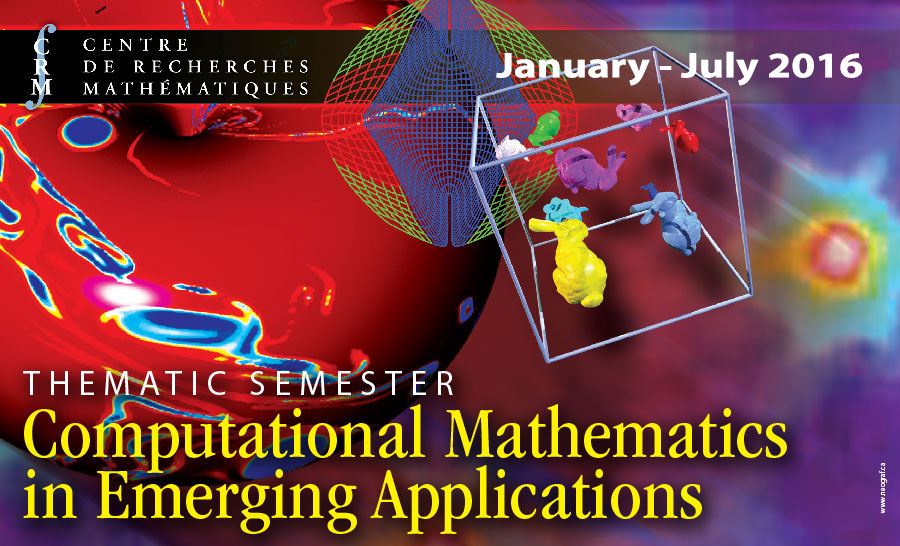AISENSTADT CHAIR
Selim Esedoglu (Michigan)
January 4 - April 16, 2016
WORKSHOPS
Applications and New Frontiers for the Finite Element Method
May 9-13, 2016
Partial Order in Materials: Analysis, Simulations and Beyond
June 21-30, 2016
Complex Boundary and Interface Problems: Theoretical models, Applications and Mathematical Challenges
July 4-8, 2016
Computational Optimal Transportation
July 18-22, 2016
Related activity
Numerical Analysis of Singularly Perturbed Differential Equations
